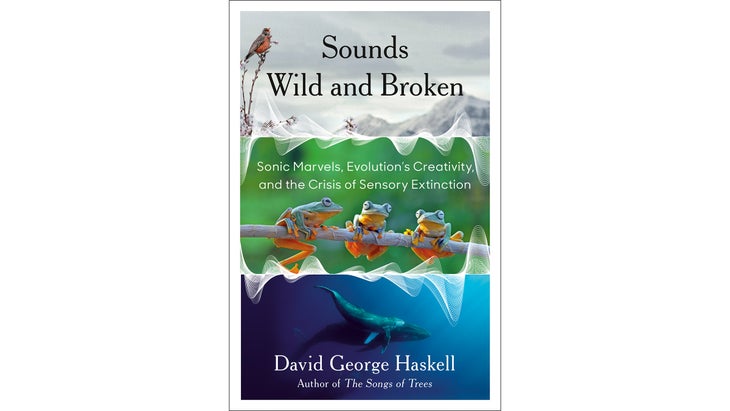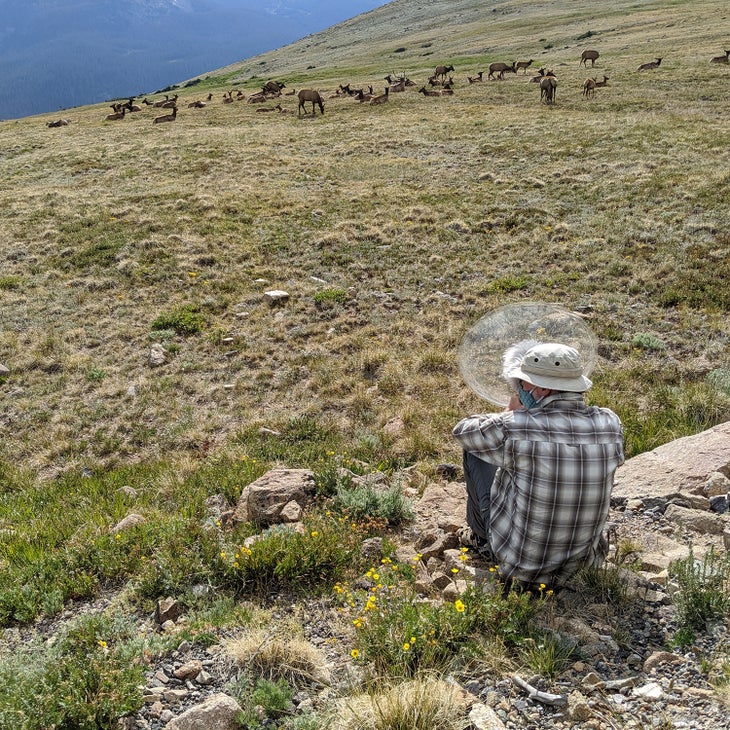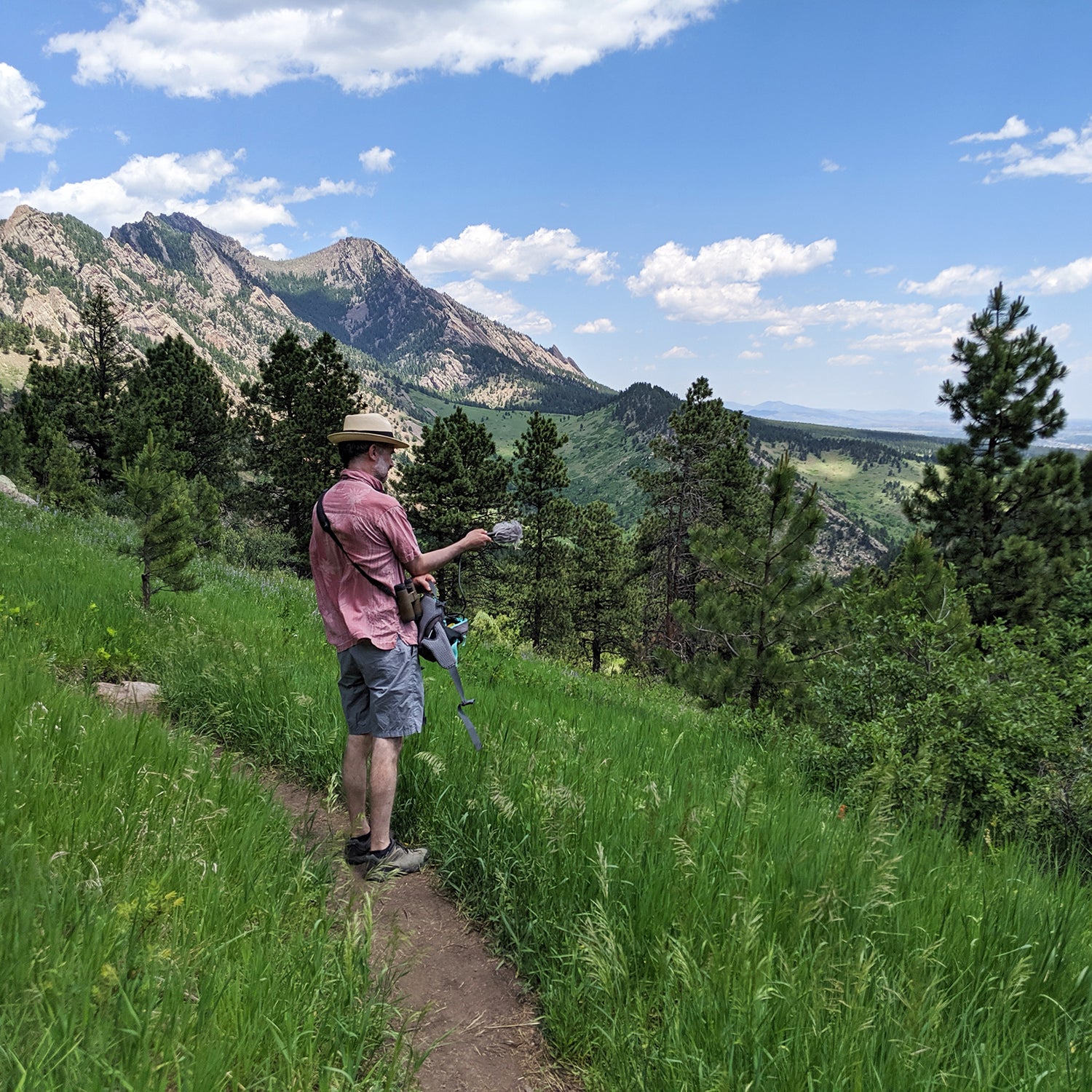A few months ago, I had dinner at the home of ecologist David Haskell. As we were transitioning toward dessert, he asked me, “Would you like to see my mammoth flute?” Haskell has a slightly awkward and formal manner, and he is something of an idiosyncratic genius (he once had his biology students at the University of the South in Sewanee, Tennessee, swab their anuses with Q-tips to reveal which of them showered with antibacterial soap, based on the colors of the resulting petri-dish cultures), so I knew this wasn’t the setup to a bad joke. He was writing a book on the history of sound, a topic of mind-bending ambition, and the flute was key to his narrative. The instrument he produced was about ten inches long, slightly curved, and just larger in diameter than a pencil. It had been carved from a woolly mammoth tusk by a German craftsman who re-creates artifacts for museums, and it was an exact replica of in southern Germany in 2004. They are the oldest known musical instruments created by humans. Haskell had commissioned the replica to study its sound.
The fact that I, like most of humanity, had never heard of these flutes or this epochal moment in our species’ development—the creation of instrumental music—was a problem, Haskell told me. “We have simply not valued sound, either its history or its diversity,” he said, fingering the seven evenly spaced holes along the flute’s shaft. “That’s why the world’s soundscapes are disappearing.” I knew that if anyone could make me or anyone else care about the precarious fate of sound��on earth, it was him. That’s exactly what he attempts to do in his latest book, , out this month.

Haskell’s previous works leveraged two tools that established him as one of America’s premier nature writers: his Zen-like ability to pay granular attention to what most people ignore and a lyrical writing style few scientists can muster. In , a Pulitzer Prize finalist, he monitored the same area-rug-size patch of forest floor daily for a year and managed to draw from its inhabitants more drama than a Mexican soap opera. When I learned of the title of his second book, (funded with a Guggenheim Fellowship), and that it involved his sitting contemplatively for weeks on end with 12 individual trees scattered around the world, I knew I had to meet the guy. On assignment for ���ϳԹ���, I accompanied him on a research trip to one of his trees, a Bradford pear at 86th and Broadway in New York City. For two days, he made observations about the tree ranging from quirky to astonishing. We became friends after Haskell later moved to Atlanta, where I live, and in no time he had familiarized himself intimately with every species of plant and animal in his leafy corner of town, as well as the sounds those species make.
Ahead of the release of Sounds Wild and Broken, I asked him what compelled him to write a whole book about the topic. Part of it stems from the dissertation he wrote as a Ph.D. student at Cornell University on the noises baby birds make when begging for food from their parents. He learned that the sounds different species emit offer insights into their evolution. “Birds that nest on the ground make radically different sounds because they are a lot more vulnerable to predators,” he tells me. Over time, he became more curious about what factors created sonic diversity worldwide. “And in particular, where do humans fit into this?” he says. “Is human language and music somehow outside of the creative processes of life or do we belong within?” If it’s the latter, and human sound making unfolded the same way it did for every other species, then that raises a larger question: Why are we destroying the soundscapes of our fellow species? Should we not be valuing the glorious sounds they produce?

The first two thirds of Sounds Wild and Broken celebrate the evolution and fabulous diversification of sound on earth. After three billion years of a planetary soundscape consisting of howling wind and waves, crashing thunder, and falling rocks, life emerged, and with it dynamic new sounds. Haskell walks us first through the vibrations of cilia-powered bacteria, then the drone of crickets—the first creatures to produce communicative sound—and the blossoming of birdsong and beyond. We learn how creatures developed specific sounds in the context of finding food, locating mates, and dodging predators, and how these sounds were shaped by their respective ecosystems.
As he did in The Songs of Trees, Haskell enlivens the science by taking us on a journey, hopping from continent to continent. He wanders the mountains of southern France, treks Ecuador’s Amazon jungle, and noses about eucalyptus forests in New South Wales, all to illustrate the connection between sound and place. On a mountain ridge in Colorado, for example, he listens as a red crossbill pitches its song higher to penetrate the great gusts of wind that roar regularly through the Douglas firs. “The character of the mountain is contained within this song,” Haskell writes. “When this male crossbill offers his springtime melodies, the combined experience of thousands of ancestors flows to the air. Only those predecessors whose songs accommodated the particular challenges of the wind in these trees passed on their genes. Evolution shaped the song to the place.”
Audio Clip: Red Crossbill Call in the Rocky Mountains
Haskell’s evocative writing placed me on that ridge in the Rocky Mountains, and smack inside those aforementioned Paleolithic caves in southern Germany, where he shows that the evolution of human sound did indeed unfold like every other species’. The people who lived here created sounds that reflected their environment and circumstances, not unlike the red crossbill’s developing songs to deal with mountain winds. Stuck in these caves for months to avoid frigid cold and predators, residents fashioned instruments from one of the few prey species available and created sounds in conjunction with their acoustic space. Haskell claps and whistles inside the caves to sample their rich acoustics. “The musical instruments crafted in that space are a great match for it,” he tells me. “If you play a flute in that kind of resonant space, it sounds gorgeous. So, right from the dawn of instrumental music, there was a tight association between the form of music, the musical instrument, and the space where it was played.”
Audio Clip: Mammoth Ivory Flute Replica (Performed by Anna Friederike Potengowski)
Haskell gets irked when discussing how humans have overlooked seminal moments in the history of sound, and this goes beyond the Pleistocene flutes. At one point in his research, he was walking a mountain road in France where in 2003 a fossil was discovered bearing a sound-making structure, a ridge on the wing of an extinct insect called Permostridulus, an ancestor of modern crickets. This fossil is the oldest evidence of a living organism exhibiting��sonic communication. Nobody knows why Permostridulus risked predation and shattered the relative silence of earth’s preceding four billion years. Maybe the sound afforded an advantage during breeding season or maybe it served a defensive purpose. Regardless, it happened, and in so doing it altered the course of evolution on earth. And yet Haskell tells me there’s no shrine noting this pivotal moment. There’s no monument, museum, or even a roadside plaque. No media anywhere covered the fossil discovery. “What pisses me off is we have this incredible opportunity for celebration, and we’re not doing it,” he says. “The first creature that made communicative sound seems like something we should at least know about, yet it took me months of digging through the literature to piece together who was the first singer on earth.”
Audio Clip: Permostridulus Chirp Reconstruction
We’re not just ignoring sounds, we’re destroying them, as a by-product of our destroying ecosystems. The stats are overwhelming. There’s the felling of four million hectares of rainforest annually, the loss of 80 percent of the planet’s grasslands, the disappearance of half its wetlands, the massive insect die-offs in Europe and North America. Our greatest sin, however, is offshore. “If there’s an acoustic hell,” Haskell assures me, “it’s today’s oceans.” For millions of years, the oceans teemed with sounds and songs of marine life. We then removed most of the whales and filled the seas with human-made noise—the racket of commercial shipping, the sonar of navies, and, worst of all, the seismic exploration for oil. “These ships drag arrays of air guns that make loud bangs every few seconds over months,” Haskell says. “You can hear them across oceans.” He asks me to imagine a jackhammer throttling my living room. That’s what the ocean is like for marine life. Of course, I could leave my house anytime to escape such noise. Fish and whales can’t do that. Haskell calls this crime “sonic violence.”
About a year ago, prompted by some combination of inspiration from Haskell and adjustments to the COVID pandemic, I began drinking my first cup of coffee each morning in my backyard garden, where I took up the practice of active listening. Beyond the signature hoot of barred owls, I still have no idea which birds make what sounds. But what I can do now is distinguish when four or five species are singing, whereas before all I heard was a tangled knot of birdsong. I can discern the respective distant hums of the interstate versus a passing jet versus surface street traffic. When squirrels issue their warnings, I know to look for red-shouldered hawks or neighborhood cats. It’s not much, but at least now I’m paying attention. Haskell tells me he hopes his book will be an invitation for humanity to start doing that, paying attention, as a first step toward preserving the earth’s many sounds. “We need to notice and celebrate the rich diversity of sounds on earth,” he says. “Without joyful appreciation, why care? Paying attention is one foundation of ethical action.”


